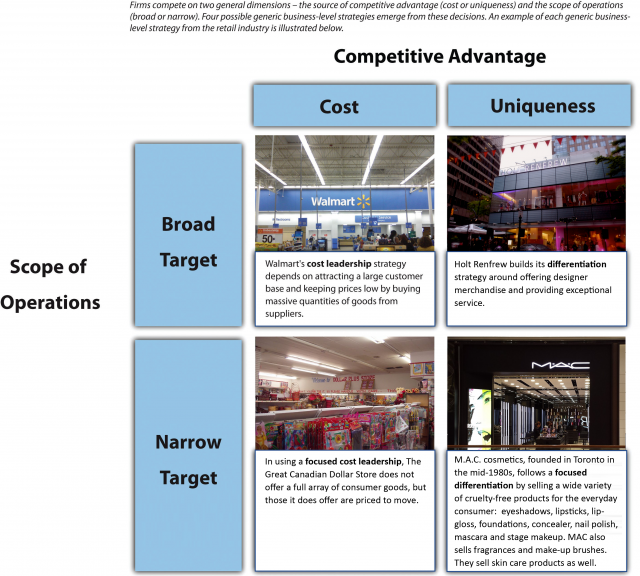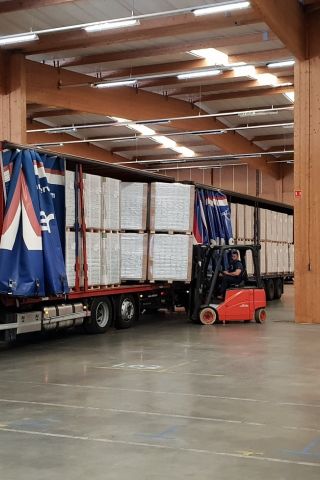How to create a Carrier Management Strategy in 10 steps?
Creating a strong yet flexible Carrier Management Strategy doesn't need to be painful.
Here are ten steps to help you create an effective plan for your business.
After this article, you know the answer to the following:
✔ What is a carrier management strategy?
✔ How to create a winning carrier management strategy?
✔ How can you improve performance while staying relaxed?
✔ Why carrier management shouldn't focus on price?
What is a Carrier Management Strategy?
First published: September 11, 2021
Last updated: July 11, 2025
A carrier management strategy summarises your goals and everything you plan to do to achieve them. These goals often focus on balancing carrier capacity with needed transport capacity, costs, and quality measures like on-time delivery.
However, carrier management has become more complex; focusing solely on traditional goals may lead to missed opportunities. The transport industry has faced increasing challenges, including regulatory changes, digitalisation, and global supply chain disruptions. Effective carrier management must adapt to these shifts by integrating flexible strategies, monitoring external risks, and leveraging emerging logistics technologies.
The game changers you want to integrate into your strategy are:
- sustainability,
- data maturity & management,
- IT readiness
- and carrier loyalty.
Do you have no idea what to do with these topics?
We will provide you with some essential insights. The more specific your plan is, the more effective it will be. Keep it concise. Avoid setting goals that are too vague or unrealistic to measure successfully.
Or, if you want to be sure about your carrier management goals and tactics, you can let a 4PL provider like SmartWay Logistics look at your carrier management strategy.
In this article, we'll walk you through our nine-step guide, providing you with a winning carrier management plan.
Why do you need a Carrier Management Strategy?
Without a strategy, you're driving in a truck without a map and navigation. You don't know where you're heading, why you're doing what you're doing and whether the roads you take will lead anywhere anyway.
More specific for logistics:
Supply chains have relied on the flexibility of transport for a long time. However, the current transport market has shifted. After years of enough carrier capacity and low prices, the tides have turned. Trends like driver shortage, geopolitical conflicts and uncertainty on the rise (such as the Russian invasion of Ukraïne), increasing fuel and energy prices and tightening sustainability regulations (e.g., CSRD & Fit for 55) and ambitions have made transport less flexible and more expensive. The supply chain disruptions caused by the various crises of the past years (from corona and the Evergrande towards the Red Sea crisis), ongoing port congestion in Europe, and supply and capacity fluctuations due to economic slowdowns and threats like import tariffs all over the world further highlight the fragility of our global supply chain networks.
So, to find the right balance between resources, needed capacity and flexibility in your transport flow, you need to know what's ahead of you and plan accordingly.
How to create a Carrier Management Strategy?
You can build a successful and competitive carrier management strategy by executing the ten steps described in this article.
- Step 1. Choose carrier management goals that align with business objectives
- Step 2. Learn everything you can about your market, competition, customers and carriers
- Step 3. Check your IT maturity
- Step 4. Get quality data and analyse
- Step 5. Perform carrier management audits
- Step 6. Manage your carrier database
- Step 7. Create a transport capacity calendar
- Step 8. Find more suitable carriers
- Step 9. Execute your strategy
- Step 10. Track performance, optimise and adjust your strategy accordingly
Step 1. Choose carrier management goals that align with business objectives
The goals of your carrier management plan should be aligned with the overall organisation's goals. Therefore, the first step is to consider the main company goals, as well as the logistics supply chain department's goals. If your company has a premium quality strategy, you want to focus on minimising damaged goods and on-time delivery, whereas a price-competitive company strategy might ask for a more cost-efficient carrier management strategy.
Additionally, an effective carrier strategy should align with the company's corporate sustainability goals. Companies should assess their carriers’ environmental performance, prioritise low-emission transport options, and explore collaborations to optimise truck capacity and reduce empty miles. Regulations like CSRD increasingly hold companies accountable for supply chain emissions, making social responsibility and sustainability a key component of strategic carrier management.

Carrier management goals
The general goal of your department will probably be something like 'delivering every product to the final destination timely, cost-efficient and without any damage or loss of value.'
However, to create a winning strategy, you need to delve deeper and formulate SMART goals.
Choose focus areas
First, you want to know your most considerable losses or missed opportunities. Therefore, you need to investigate and ask questions like:
- Where can you add the most value to our company and the customer?
- What is the current time and cost performance?
- How efficiently do you manage the transport in regions A, B and C?
- What is timely for customers X, Y and Z?
- How much loss of value is acceptable?
- How well are current carrier relations?
- How much carrier capacity and coverage do you have in specific areas?
- Etc.
Next, you can choose your focus areas and set goals accordingly. These goals are best formulated in a SMART way.
Set S.M.A.R.T. goals and objectives
Each of your goals should be:
- Specific
- Measurable
- Attainable
- Relevant
- Time-bound
If your objectives and goals contain these elements, you can measure success and return on investment (ROI).
For example:
- By the end of the year, all trucks used by carriers should be Euro 6, and at least one-third of contracted carriers have shared their plans to invest in electric trucks over the next 5 years.
- We improved the service level and transit time for our customers by more than 10% in nine months.
- 45% of long-distance lanes were performed by LHV in 2022.
Step 2. Learn everything you can about your market, competition, customers and carriers
In the end, you want to make successful matches between your customers and carriers while obtaining your own (company)goals. This means you need to gather information, insights and knowledge about your markets, competition, customers and carriers.
Stay informed about changing legislation and techniques. Take sustainability requirements like the planned ETS (Emission Trading System) for transport in Europe and the Paris Agreement, which will have an impact on the transportation of goods. Also, long-term trends such as driver shortage are factors to consider.
Be aware of transport market niches and specifics
In addition to general transport rules and trends, it's necessary to be aware of the niches and specifics. The German market differs from the Dutch and French markets, as different rates, laws, and equipment regulations are in place. An FTL (Full Truck Load) and a combined shipment require different equipment and likely different carriers as well. A successful carrier manager is well-versed in all disciplines.
Learn customer requirements & define carrier selection criteria
By now, you have set some clear, smart goals. However, your customer also has specific goals and processes. With many carriers in the market, there is a wide range of options to choose from. So, if you want to find your cherries in the basket, you need criteria.
Clear and mutually agreed-upon criteria between you and your customer will help you manage expectations and find suitable matches. Knowing the ins and outs of your customers' products, processes, and preferences will get you ahead of the competition. To gather this knowledge, the SmartWay Logistics carrier management team conducts onboarding interviews with both your carrier and your customer. Topics to cover include service quality, freight rates, sustainability, handling equipment, schedules, and information technology.
Key takeaway:
The devil is in the details. Everyone can compile a list of carriers found in Google, but it takes knowledge and clear, agreed-on criteria to make successful matches.
Step 3. Is your IT up to date?
An advanced Transport Management System (TMS), like 3Gtms, is an absolute prerequisite to staying in the game. To be ahead of the competition, you want to have proper Business Intelligence (BI) tools and staff capable of getting the best data and insights from these tools.
Your carrier management team needs a modern TMS and BI tools for real-time tracking, performance monitoring, and predictive analytics. By leveraging these technologies, companies can proactively manage carrier performance, anticipate capacity needs, and optimise routes for efficiency and cost savings.
Step 4. Be data-driven, get quality data and analyse
Being data-driven is crucial for enhancing your carrier management strategy. Have you ever examined the data from the past 5 years? Comparing data from the last year to previous periods can reveal significant patterns and insights. Identify and review peaks, moments of poor performance, or costs that exceed the budget. Do you see patterns? And can you identify the cause?
Identifying patterns and causes
- Examine patterns: Do consistent trends emerge?
- Analyse root causes: What external or internal factors drive these trends?
For example:
If you notice peaks in transport capacity linked to specific customer promotions, visually plot these patterns on a calendar. This practice enables accurate forecasting and strengthens conversations with customers and carriers, helping to anticipate and efficiently manage demand.
How to become data-driven?
Becoming a data-driven carrier management team requires:
Clear objectives and KPIs: Define precisely what data is needed to measure your performance according to your goals.
Data accessibility: Ensure your team has easy access to accurate and relevant data, for example with Power BI dashboards.
Data literacy: Invest in training your team to understand, interpret, and act on data insights effectively.
Iterative processes: Regularly review, refine, and adapt your methods based on data feedback.
How to ensure quality data?
High-quality data is essential for accurate reporting and valuable analysis.
Data cleaning: Remove duplicates, correct inaccuracies, and fill in missing values.
Data validation: Verify accuracy and consistency by cross-checking with trusted sources.
Robust data management practices: Implement reliable data governance to maintain data quality.
Standardisation: Apply recognised methodologies like ISO14083 or the CO₂ Performance Ladder for consistent data handling and reporting.
The benefit of carrier data analysis
Comprehensive data analysis guides strategic decision-making, highlighting where to allocate resources most effectively to optimise your carrier strategy.
Benefits include:
Identify top-performing carriers and areas for improvement.
Actionable insights
Reduce unnecessary costs and anticipate market fluctuations.
Typically, this analysis is performed by a skilled business analyst, often collaborating with procurement specialists or an experienced 4PL provider.
More on carrier analytics arrow_forward_iosThis brings us to step 5: performing carrier management audits.
Step 5. Perform carrier management audits
In audits, you evaluate the carrier's performance. You use the available data and assess the performance with both your customer(s) and carriers. Use this moment as a time for a good conversation.
Discuss the lessons learned from the past year, to learn from both customers and carriers and to look ahead to the coming year.
See the carrier perspective
During the discussions, consider the perspective of the carrier, certainly when talking to your customers.
This way, expectations remain realistic, and you can even create added value for the customer. For example, by agreeing on spreading the order volume, even if the customer may send one large order.
Plan structural talks
If you haven't done so already, this is definitely the moment to schedule conversations with both your customers and carriers.
Our carrier management experts have several periodic assessment moments together with carriers. We consider this to be important because it gives both parties valuable insights, is helpful in managing expectations, and allows us to react in a timely manner to changing conditions.
Use a scorecard with performance KPI's
During the audits, you want to discuss KPI's. Using a scorecard gives clarity, and by sharing the scorecard on a regular basis, you give your carriers continuous feedback.
Step 6. Manage your carrier database
Your carrier database is one of your most important resources. If your carrier database is up to date, clean and as complete as possible, you can pick the right cherries for your pie.
At the bare minimum, a carrier database should contain:
- Type of equipment, like: standard trailer, mega-trailer, semi-trailer, volume-combi, LHV, swap body and more
- Region(s) the carrier operates in: one country, several and/or cross-border
- Market segment, like: food, retail, construction materials, etc.
- Type of shipments, e.g. express, FTL, LTL, groupage and parcels
But for the best carrier database, it's recommended to also:
- Improve carrier information based on shifting demands, e.g. start logging sustainability performance if you don't log this by now.
- Update carrier profiles, e.g. continuously log performance for the best insights
- Log the results of carrier audits as mentioned in step 4
Step 7. Create a transport capacity calendar
The calendar is all about forecasting and visualizing these forecasts.
Think of it as choosing the right clothes for the weather.
Roughly speaking, we know which clothes are worn in which season.
Then, by checking the upcoming weather, we will roughly know which jacket fits best for the coming week. And whether to wear a hat and gloves... Most importantly, by following the forecasts, it becomes very unlikely that people will end up in a snow avalanche wearing swimming trunks.
The same applies to transport; only the transport seasons are controlled by different factors.
Long story short
Forecasting is a continuous process whereby the forecast is regularly adjusted and becomes more accurate as you get closer to the planned event.
How to apply transport forecasting?
The important factors depend on your specific situation, but think about these kinds of scenarios:
Order peak
Last June there was a big peak in orders. What do you expect this year? Will it be higher, lower, or will it stay about the same?
Planned events
Is there any machine maintenance planned? Will there be a relocation of a DC, shop or factory?
This may mean a relocation of production and thus other carriers.
Market trends
This one is a bit more challenging but nevertheless important. Try to factor in market trends such as production and trade volumes, wage increases and shortages like carrier capacity.
Although more uncertain, these can be factored into the forecast and can give you the necessary edge in your business.
Share & prepare
Do not forget to share and discuss this forecast with your customers and carriers. This way, you can test your forecast and also prepare carriers for loss or extra demand capacity, thus improving your relationships.
LEAVE YOUR CONTACT DETAILS AND WE WILL CONTACT YOU.
Want to know more about carrier management?
Ask about carrier management, other SmartWay Logistics services, pricing, implementation, etc.
Our experts are ready to answer your questions. You can also check out our leaflet or give us a call (+31(0)30 - 82 00 800).

Step 8. Find more suitable carriers
By now, you have a broad idea of:
- Needed transport capacity throughout the year
- The peaks and dips during the year
- The carrier capacity contracted and flexible available
- Prices and quality of the available carriers
With this knowledge, you can recognize and analyze the gaps. Take this gap, for example:
You have an ever-reoccurring order peak, and there is never enough contracted carrier capacity available at that moment. Therefore, you always buy expensive capacity wherever it is available. With your strategy in place, you can anticipate and keep capacity and costs in check.
Develop & maintain a flexible shell
In addition to a good base of carriers, a flexible layer with an extensive and reliable network of carriers, made accessible in a database, is recommended.
A strong carrier management team is a significant advantage here. This CM team is strong if it works smoothly with other internal departments because carrier management success depends on collaboration — not only with transport providers but also across internal departments. Aligning logistics, procurement, customer service, and finance teams ensures that carrier selection supports broader business objectives and that execution goes smoothly. Externally, fostering transparent, long-term relationships with carriers creates stability and better service levels.
What is the advantage of a strong carrier management team?
Suppose an event occurs, like a lockdown or another unexpected event, causing significant chain disruption. In that case, you want a team that can quickly and easily interface with the carriers.
Key takeaway:
A strong carrier management team enables you to respond rapidly and adequately to unexpected events.
Step 9. Execute your strategy
As Nike says: Just do it!
Step 10. Track performance, optimize and adjust your strategy accordingly
A strategy is necessary to have a shared point of view. However, the world of logistics is continuously changing; thus, to ensure it stays relevant and you keep your winning edge on the competition, you have to track your performance and optimize and adjust your strategy accordingly.
Risk management is an essential part of carrier strategy. Companies should implement contingency plans, such as secondary carrier agreements, diversified transport modes, and real-time market monitoring. Building a flexible strategy allows for quick adaptations in case of disruptions.
Track performance by combining a slot booking system, a state-of-the-art transport management system (TMS), and a BI reporting tool. With an easy-to-use slot booking system, like SmartWay, at your sites, you can track arrivals and departures (for on-time performance) and log incidents. Your TMS (in-house or outsourced) is used to plan your orders and as your primary source to track all performance; that's why we connect your slot booking system and reporting tools. The latter can present you actionable insights out of your data.
These key insights will help you adjust your strategy and stay on route for your goals.
Our Services
Carrier management is an integrated part of SmartWay Logistics' control tower functionality.
With our in-house experts, we can provide consultancy advice or coordinate the carrier process on your behalf.






